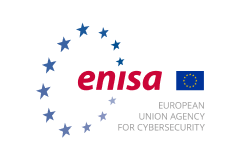ENISA & ETSI Joint Workshop Tackles Challenges of European Identity Proofing
The European Union Agency for Cybersecurity (ENISA) and the European Telecommunications Standards Institute (ETSI) organised a workshop today to discuss cybersecurity challenges and remote identity proofing.
Stock taking on EU Resilience
How do 23 countries in Europe strengthen the resilience of public communication networks? EU Agency presents the first EU-wide survey on policies and regulations.
The EU Agency ENISA presents its first ever EU wide report on “Stock Taking of…
Smart Airports: How to protect airport passengers from cyber disruptions
ENISA publishes a study on "Securing smart airports" providing airport decision makers and security personnel a concrete guide on preventing cyber-attacks and disruptions.
Incidents Handling and Cybercrime Investigations
The European Union Agency for Cybersecurity (ENISA) explores how CSIRTs, law enforcement agencies and the judiciary cooperate and how they can train together to better tackle cyber incidents and respond to cybercrime.
Building a Stronger Cybersecurity Community: 8th ENISA Industry Event
On 17 February 2020, the EU Agency for Cybersecurity organised its 8th Industry Event in Brussels.
New EU Cybersecurity strategy & Directive announced
Today, Thursday, 7th of February the European Commission and the High Representative of the European Union for Foreign Affairs and Security Policy announced the EU's Cybersecurity Strategy, and a complementary proposal for a Directive on measures…
Sharing is caring: technical cooperation across CSIRTs, LE and the judiciary
In an effort to estimate the degree of maturity of the technical cooperation across national and governmental CSIRTs, law enforcement agencies (LEAs) and the judiciary when it comes down to cybercrime investigation, ENISA has prepared a report that…
Hackers-for-Hire drive the Evolution of the New ENISA Threat Landscape
The 9th edition of the ENISA Threat Landscape (ETL) report released by the European Union Agency for Cybersecurity highlights the surge in cybercriminality motivated by monetisation using ransomware or cryptojacking.
Pagination









